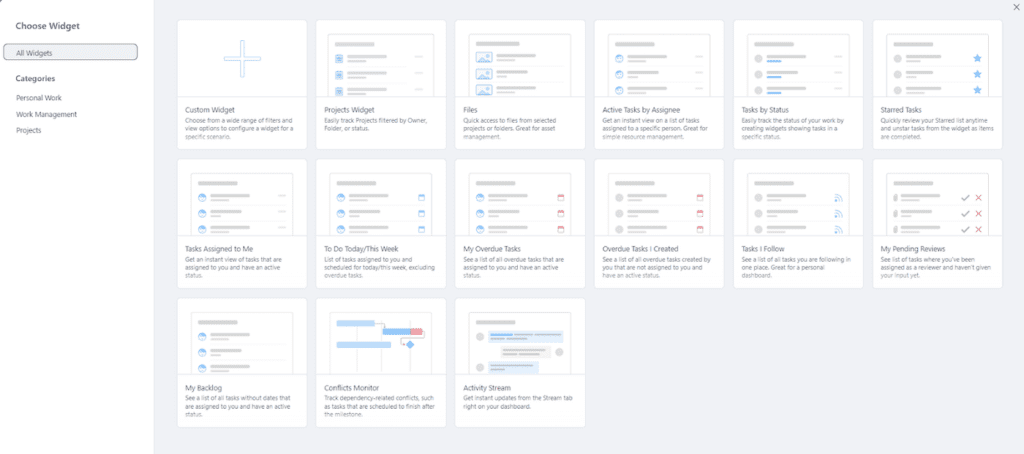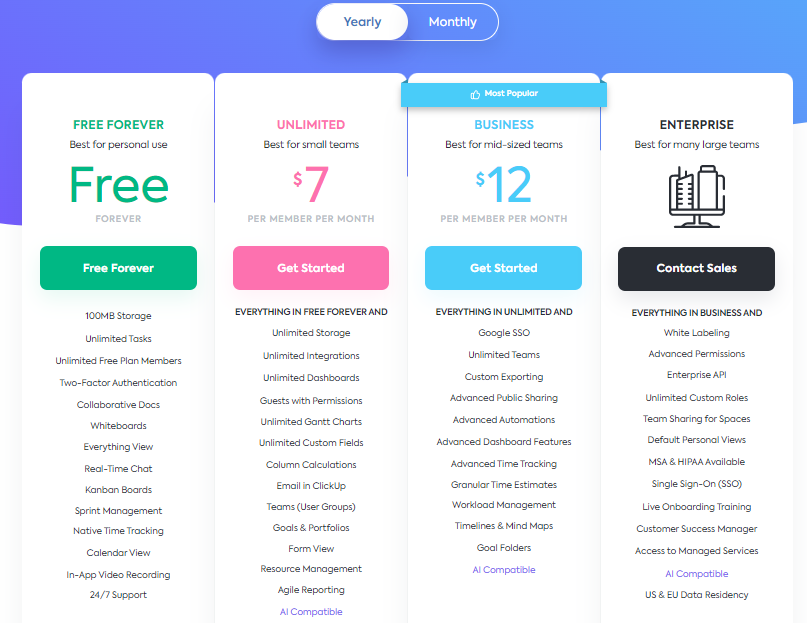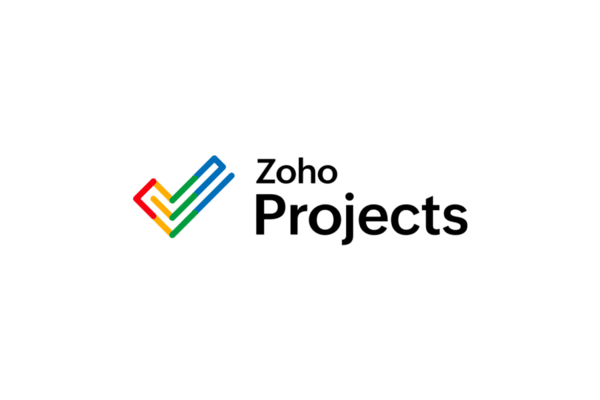Project management tools have become essential to any organization’s success. They help streamline processes, improve efficiency, and maximize productivity. But with so many options, it can be challenging to choose the right one. A matchup I see all the time is ClickUp and Wrike.
In this article, we’ll explore the pros and cons of each tool and compare its features and capabilities to help you decide which is the best for your organization.
Introducing ClickUp

ClickUp is a comprehensive project management tool designed to help teams stay organized and productive. It’s an all-in-one suite of tools, including task management, resource management, collaboration, and more.
With ClickUp, teams can easily assign tasks and track progress in real time, eliminating the need for tedious and time-consuming status updates. It also offers a range of features to help manage resources, from task dependencies to project budgets. On top of that, ClickUp makes it easy to collaborate with other teams, allowing users to comment on tasks and share documents.
Finally, it has a range of analytics and reporting tools, enabling users to gain insights into their team’s performance and progress.
All in all, ClickUp is a powerful and versatile project management tool that can help teams stay on top of their projects and maximize efficiency.
Read more about ClickUp in our complete overview.
Introducing Wrike

Wrike is a powerful project management tool designed to help businesses and teams streamline their workflow. It offers an intuitive interface and an array of features to make managing projects and tasks more accessible than ever.
With Wrike, you can easily create and assign tasks, track progress and deadlines, and collaborate with your team in real time. It has a comprehensive dashboard that gives you an overview of all your projects, tasks, and deadlines at a glance.
Wrike also integrates with popular tools like Dropbox, Slack, and Google Drive to access documents and files from any of these services. It’s no wonder Wrike is the go-to project management solution for many businesses. Its robust features and intuitive interface make it the tool of choice for those looking to get their projects done on time and on budget.
Check out our Wrike overview for features and pricing.
ClickUp vs. Wrike: Project Management
ClickUp and Wrike both have task management features that allow you and your teams to attach files, identify dependencies, add subtasks and due dates, and collaborate through comments and messages. Both platforms allow users to attach their comments to specific areas for image files to make it easier to collaborate on feedback. This makes both platforms effective for ensuring your teams are aligned and communicating their tasks. Automation is also available on both platforms.
The organization structure of tasks and projects is as follows:
Space |
 |
Space |
ClickUp offers more ways to view your tasks, but one reason Wrike is considered equally impressive and often named an excellent ClickUp alternative is because like ClickUp, it allows you to add custom fields to your task lists. Other organizational features include tags and filters.
Time tracking is also an option for both platforms. You can stay on top of your team’s time on tasks and projects within the platform. You can also track the workload for each member, so you know who is overloaded and who is free to tackle more things.
ClickUp vs. Wrike: Ease of Use
Regarding ease of use, both have steep learning curves to maximize their full features. You may access Wrike and ClickUp on your browser or download the desktop and mobile versions. ClickUp’s mobile app is quite hard to use because of its unintuitive interface.
Generally, Wrike comes with a friendlier interface, especially for beginners; you won’t find yourself overwhelmed right away. ClickUp has many features that can be intimidating when it’s your first time diving into it.
ClickUp vs. Wrike: Integrations
ClickUp and Wrike integrate with many apps most often used by project managers. A few examples are Slack, Google Calendar, Google Drive, Outlook, Microsoft Teams, and Zoom. The available app categories are customer relationship management (CRM), software and IT, business intelligence, chat and messaging, and more.
Wrike does not have time tracking and payroll integrations, however. ClickUp, on the other hand, integrates with tools like Toggl Track and Everhour, to name a few. Automation integrations are also not available on Wrike. Instead, they have an add-on feature called Wrike Integrate, where you can set up workflows across your apps.
ClickUp vs. Wrike: Dashboards and Reporting
Dashboards are interactive visualizations that give project managers an overview of the project’s progress. They glance at key project metrics such as task status, resource availability, budget, and timeline. Dashboards are typically customizable, allowing project managers to tailor the information they need to see. You can use them to track the progress of individual tasks and the project as a whole.

ClickUp and Wrike both provide the ability to create customized dashboards for teams. ClickUp offers dashboard templates for reporting and time tracking. You can also start from scratch by tailor-fitting each widget according to your needs.
Wrike’s dashboard allows you to add your widgets as well. It offers templates for personal work, work management, and project portfolios.

Privacy and sharing options are available for both Wrike and ClickUp dashboards. However, exporting information is only available on ClickUp. This feature is helpful in easily sharing information with relevant stakeholders.
ClickUp vs. Wrike: Price
A free forever plan is available for both ClickUp and Wrike. For free, ClickUp offers unlimited tasks and other essential features. These are good for individual users who want to manage personal or freelance projects.

For Wrike, unlimited tasks and subtasks can only be used when you avail of the Team paid tier. Although, Wrike’s paid tier lets you test-run it for 14 days before you’re obliged to pay.

ClickUp offers a monthly or annual payment, and paying annually can grant you discounts on the monthly fee. Wrike, however, offers yearly billing only.
Comparing the features and prices of the two, ClickUp is a more affordable option that provides much functionality.
ClickUp vs. Wrike: Which Is Best?
ClickUp and Wrike are powerful tools for prioritizing projects and teams. They both have key project management features allowing PMs and team leads to manage multiple projects in one tool. They’re both rich in integrations, allowing them to seamlessly integrate with workflows, whether you’re a software development team or a marketing team.
The area in which the tools vary vastly is in pricing. ClickUp is a more affordable option compared to Wrike. To effectively gauge which tool is better for you and your team, it’s best to give each of them a go through the free plans and trials available.






